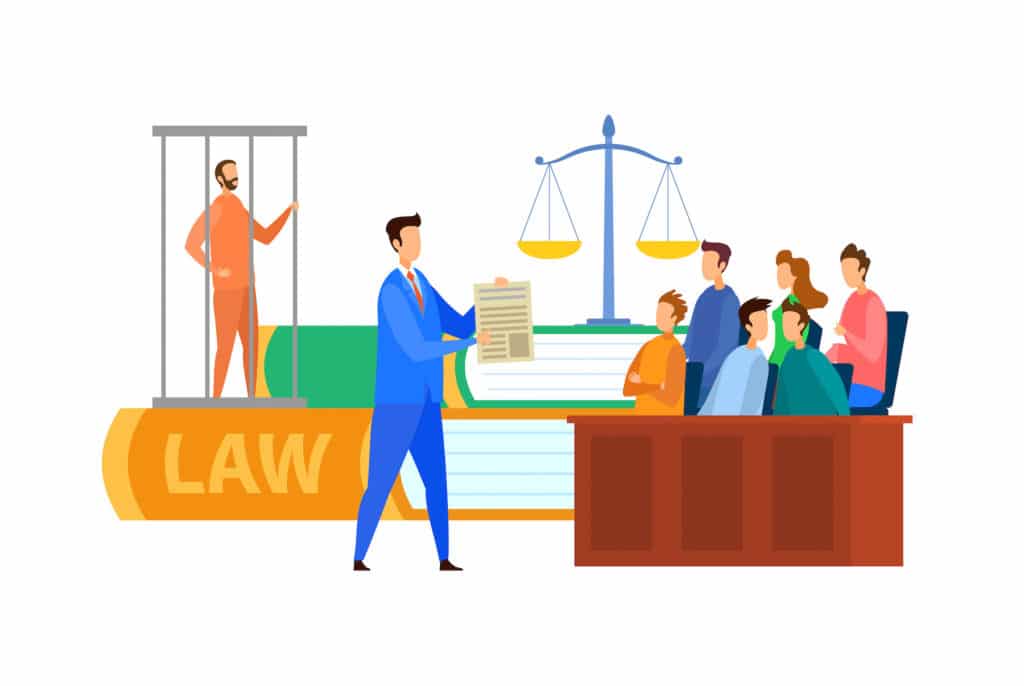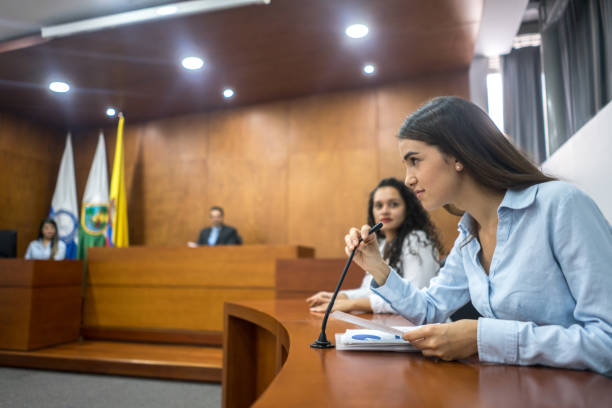The Duty of Visual Aids in Effective Trial Presentations: An Overview for Attorneys
The Duty of Visual Aids in Effective Trial Presentations: An Overview for Attorneys
Blog Article
Browsing the Complexities of Trial Presentations: Tips for Seamless Distribution and Compelling Arguments
In the realm of legal procedures, the art of trial presentation stands as a crucial determinant of success. As lawyers browse the intricate internet of court room characteristics, the capacity to perfectly provide arguments and evidence while captivating the jury's interest becomes paramount. The complexities intrinsic in trial discussions need a delicate balance of technique, finesse, and ability. By developing methods that make certain a refined distribution and crafting compelling debates that resonate with the audience, lawyers can dramatically enhance their campaigning for. In a globe where persuasion rules supreme, mastering the details of trial discussions is not merely a choice however a need for those seeking to dominate in the court room.

Recognizing Trial Goals
To efficiently navigate a trial, it is important to have a clear understanding of the goals that need to be achieved. Before entering the courtroom, lawful teams should specify their objectives and preferred results. These purposes work as guiding principles throughout the trial, forming methods and affecting decision-making processes.
Understanding test purposes involves a detailed analysis of the case, legal criteria, and the client's ideal rate of interests. Trial Presentations. It needs a precise assessment of the facts, recognizing essential concerns, and expecting prospective challenges. By establishing quantifiable and particular goals, lawyers can customize their presentations and arguments to straighten with the wanted outcomes
In addition, a clear grasp of test objectives makes it possible for lawful teams to prioritize proof, witnesses, and legal arguments efficiently. It enables the development of a meaningful narrative that reverberates with the court and jury, strengthening the total case discussion.

Organizing Proof Effectively
Having a clear understanding of trial purposes lays the foundation for organizing proof properly in legal procedures. By aligning the presentation of evidence with the desired outcomes of the test, legal groups can reinforce their arguments and boost their persuasiveness.
Another key element in arranging evidence effectively is establishing a sensible circulation. Offering proof in a coherent and sequential fashion can aid build a compelling narrative that supports the lawful debates being made. Additionally, using visual help such as graphs, charts, or timelines can better boost the organization of evidence and help in clarifying intricate partnerships or sequences of occasions.
Furthermore, ensuring that all proof presented is pertinent and acceptable to the case is vital. Inadmissible or irrelevant evidence can detract from the strength of the disagreement and potentially damage the reputation of the here and now event. As a result, a careful testimonial and selection procedure ought to be undertaken to consist of go to this website only one of the most impactful and lawfully audio proof in the trial presentation.
Crafting Influential Stories
Crafting engaging narratives plays a crucial duty in offering check out here persuasive arguments throughout lawful procedures. When constructing a story for a trial discussion, it is necessary to establish a clear story that highlights essential factors and connects them in a systematic manner. By weaving with each other evidence, statement, and lawful arguments right into a persuasive and cohesive story, lawful experts can effectively support for their clients and boost the likelihood of a positive outcome in the court.
Understanding Visual Help
Efficient usage of aesthetic help is essential to improving the effect and clarity of trial discussions. Visual aids, when utilized tactically, have the power to streamline intricate information, enhance essential points, and leave an enduring perception on the discretionary. To master aesthetic help in test discussions, it is crucial to make sure that they are clear, succinct, and pertinent to the debates being made.
When incorporating aesthetic aids, such as graphes, graphs, pictures, or timelines, into a test presentation, it is important to maintain them visually appealing yet professional. The visuals need to match the spoken disagreements, providing an aesthetic representation of the Click This Link information being gone over without frustrating the target market with unnecessary information.
Moreover, experimenting the aesthetic aids ahead of time is necessary to ensure a smooth shipment during the test. Acquainting oneself with the material, changes, and timings of each visual help can help maintain the circulation of the presentation and prevent technical glitches that may emerge.
Delivering Impactful Closing Arguments
A compelling closing debate serves as the conclusion of a trial presentation, encapsulating the core story and convincing the court and court towards a favorable decision. To deliver an impactful closing disagreement, it is important to succinctly wrap up bottom lines, highlight the staminas of your case, and resolve any weak points in a critical manner. Begin by laying out the primary disagreements that support your client's position, stressing why the evidence provided throughout the trial sustains your narrative. It is vital to develop a feeling of communication and quality, directing the discretionary in the direction of the desired conclusion.
Furthermore, including emotional charm can further strengthen your closing disagreement. Eventually, a well-crafted closing disagreement ought to leave a lasting impact, engaging the judge and jury to rule in your client's favor.
Final Thought
Finally, understanding test discussions entails recognizing goals, organizing proof, crafting narratives, making use of visual help, and supplying impactful closing disagreements. By executing these strategies successfully, lawyers can offer their case flawlessly and make compelling debates in the courtroom. It is crucial to navigate the intricacies of trial discussions with accuracy and skill to attain success in legal process.
By aligning the presentation of proof with the desired results of the test, lawful groups can strengthen their disagreements and improve their persuasiveness (Trial Presentations). To understand aesthetic aids in trial presentations, it is critical to make certain that they are clear, succinct, and relevant to the disagreements being made
A compelling closing disagreement offers as the end result of a test discussion, encapsulating the core narrative and encouraging the judge and jury towards a beneficial choice. Begin by laying out the primary disagreements that support your client's placement, emphasizing why the evidence provided throughout the test supports your story.In verdict, understanding test presentations involves understanding purposes, arranging evidence, crafting stories, making use of aesthetic aids, and supplying impactful closing disagreements.
Report this page